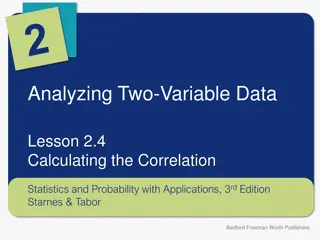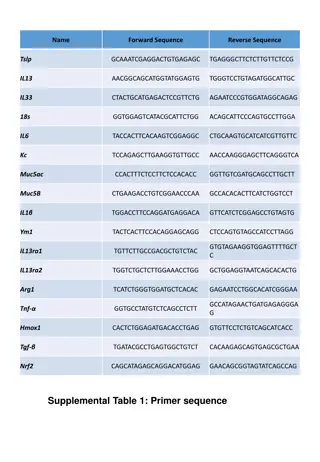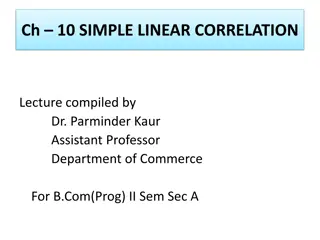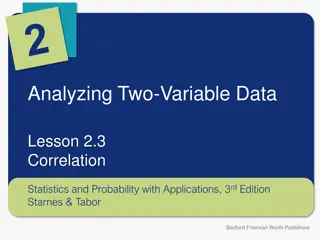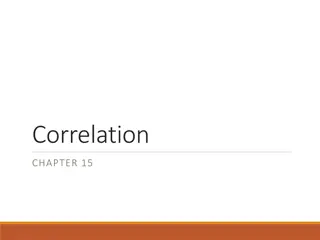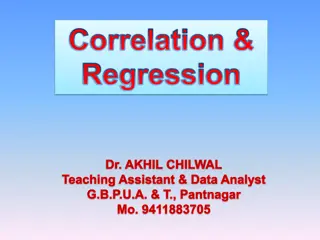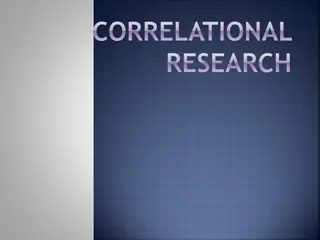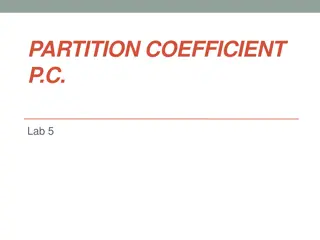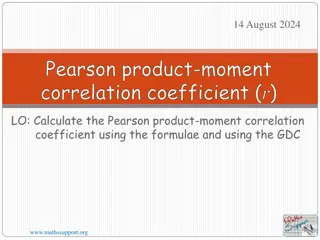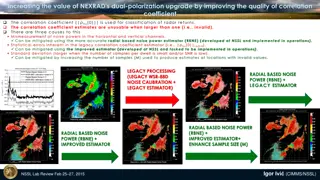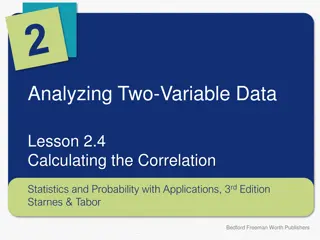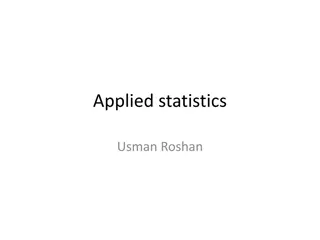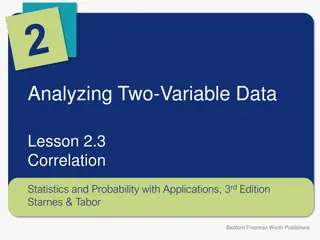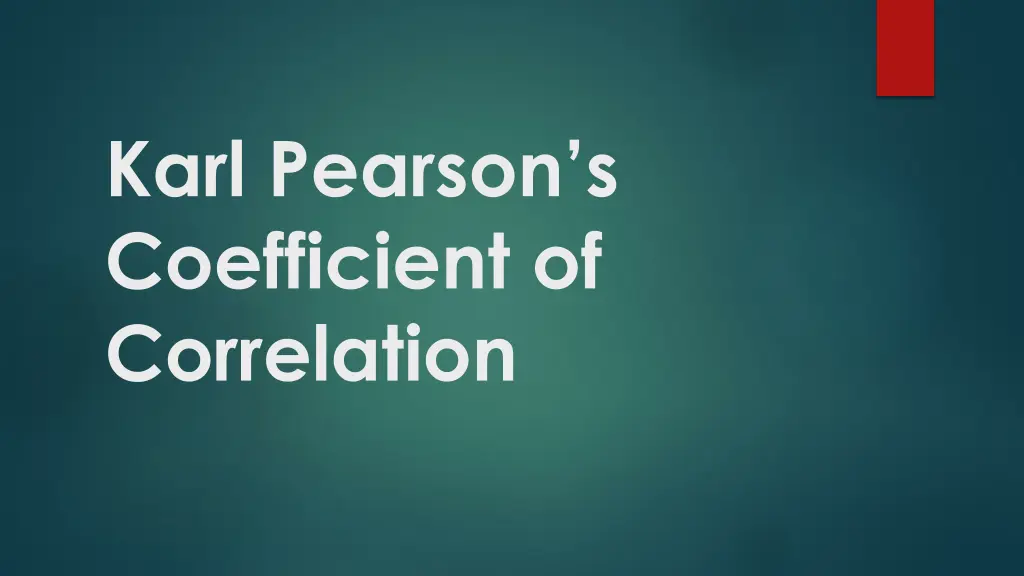
Understanding Karl Pearson's Coefficient of Correlation
Karl Pearson's Coefficient of Correlation is a widely-used mathematical method to measure the degree and direction of the relationship between linearly related variables. It is denoted by 'r' and indicates the strength and type of correlation between variables. The coefficient ranges from +1 for perfect positive correlation to -1 for perfect negative correlation, with 0 indicating no correlation. The properties and assumptions of the coefficient highlight its relevance in statistical analysis for understanding relationships between variables.
Download Presentation

Please find below an Image/Link to download the presentation.
The content on the website is provided AS IS for your information and personal use only. It may not be sold, licensed, or shared on other websites without obtaining consent from the author. If you encounter any issues during the download, it is possible that the publisher has removed the file from their server.
You are allowed to download the files provided on this website for personal or commercial use, subject to the condition that they are used lawfully. All files are the property of their respective owners.
The content on the website is provided AS IS for your information and personal use only. It may not be sold, licensed, or shared on other websites without obtaining consent from the author.
E N D
Presentation Transcript
Karl Pearsons Coefficient of Correlation
Karl Pearsons Coefficient of Correlation is widely used mathematical method wherein the numerical expression is used to calculate the degree and direction of the relationship between linear related variables. Pearson s method, popularly known as a Pearsonian Coefficient of Correlation, is the most extensively used quantitative methods in practice. The coefficient of correlation is denoted by r .
Properties of Coefficient of Correlation: The value of the coefficient of correlation (r) always lies between 1. Such as: r=+1,perfect positive correlation r=-1,perfect negative correlation r=0, no correlation The coefficient of correlation is independent of the origin and scale. By origin, it means subtracting any non-zero constant from the given value of X and Y the value of r remains unchanged. By scale it means, there is no effect on the value of r if the value of X and Y is divided or multiplied by any constant. The coefficient of correlation is a geometric mean of two regression coefficient. Symbolically it is represented as: The coefficient of correlation is zero when the variables X and Y are independent. But, however, the converse is not true.
Assumptions of Karl Pearsons Coefficient of Correlation: 1. The relationship between the variables is Linear , which means when the two variables are plotted, a straight line is formed by the points plotted. 2. There are a large number of independent causes that affect the variables under study so as to form a Normal Distribution. Such as, variables like price, demand, supply, etc. are affected by such factors that the normal distribution is formed. 3. The variables are independent of each other. Note: The coefficient of correlation measures not only the magnitude of correlation but also tells the direction. Such as, r = -0.67, which shows correlation is negative because the sign is - and the magnitude is 0.67.

